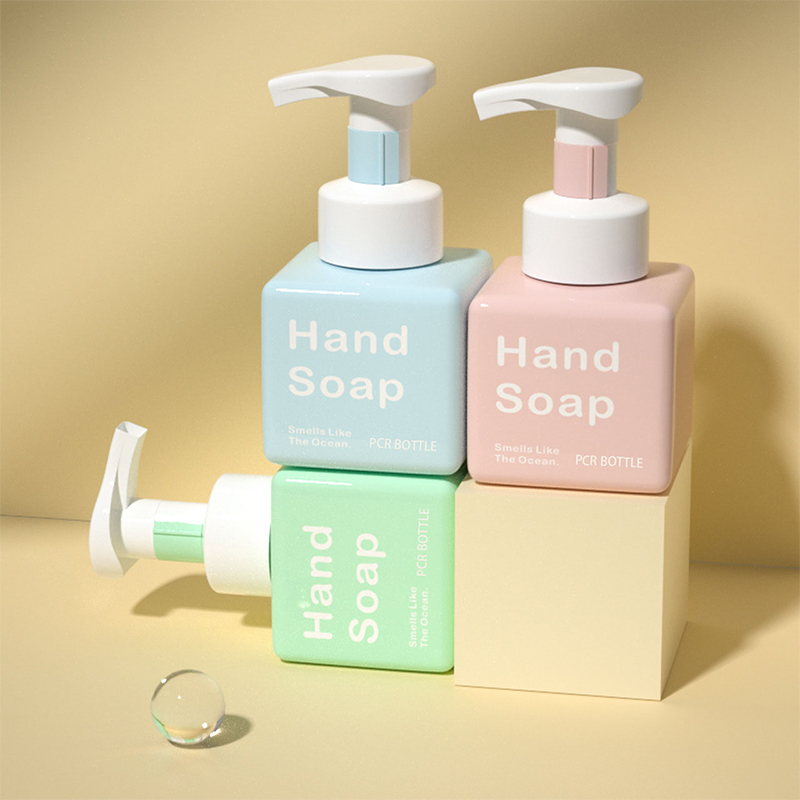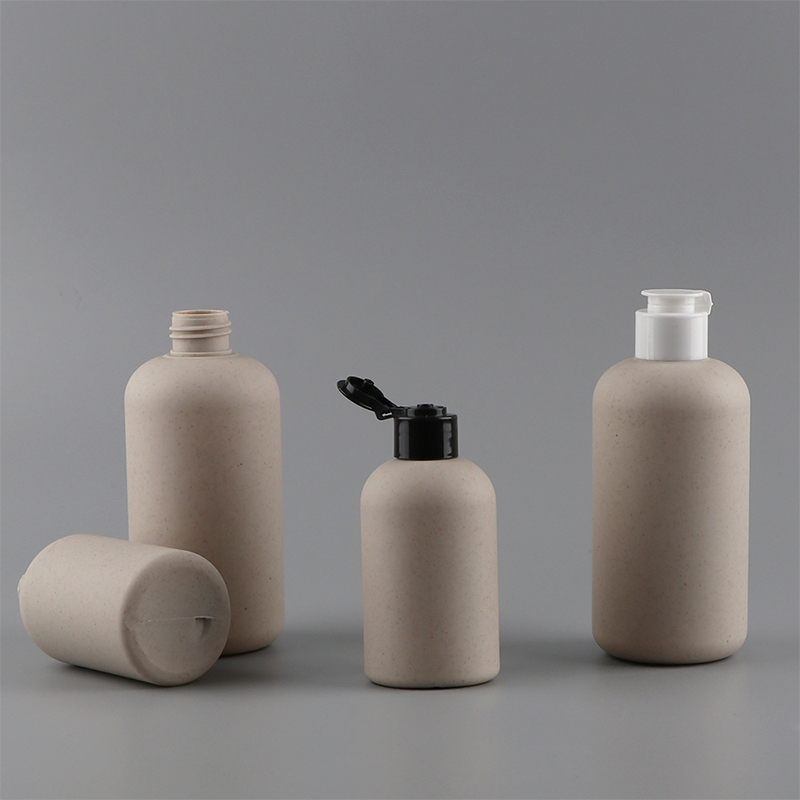How much impact does the material selection of environmental cosmetic bottles have on the environment
The materials commonly used in cosmetic bottles mainly include polyethylene (PE), polypropylene (PP), polyethylene terephthalate (PET), polyvinyl chloride (PVC) and some bio-based plastics. The environmental performance of these materials is mainly reflected in the following aspects:
Resource consumption and carbon footprint
Traditional plastics mainly rely on petroleum resources, and the energy consumption of refining and manufacturing processes is high, resulting in large carbon emissions. For example, PET is widely used due to its excellent transparency and strength, but its production process involves high energy consumption. In contrast, PP and PE have relatively low production energy consumption and are more environmentally friendly choices. In addition, the application of bio-based plastics and degradable materials has gradually emerged, which can effectively reduce dependence on fossil energy and reduce carbon footprint.
Recyclability and recycling
The recycling rate of plastic bottles directly affects the environmental burden of waste. PET plastics have a high recycling value and a mature recycling system, which can effectively achieve reuse and reduce environmental pollution. PP and PE are relatively difficult to recycle, but through technological improvements, their recycling potential is also gradually increasing. Some environmentally friendly materials, such as PLA (polylactic acid), are biodegradable, but because the recycling system is not yet perfect, over-reliance on degradation also poses environmental risks.
Degradability and environmental pollution
Traditional plastics degrade very slowly in the natural environment, which can easily cause "white pollution" and damage the soil and water ecosystems. Environmental cosmetic bottle materials should have good degradation performance or be designed as easy-to-recycle structures to reduce the generation of microplastics. In recent years, the research and development and application of bio-based and degradable materials have provided new directions for environmentally friendly bottles, but the actual degradation conditions, speed and environmental impact of materials still need scientific evaluation.
Environmental impact of manufacturing processes and additional processes
In addition to basic materials, cosmetic bottle surface treatment processes (such as spraying, UV coating, silk screen, hot stamping, etc.) also bring environmental burdens. For example, some coatings contain volatile organic compounds (VOCs), which have a certain impact on the atmospheric environment. Optimizing processes and using environmentally friendly materials can significantly reduce such impacts.
What should be paid attention to in the transportation and storage of environmental cosmetic bottles
Key control points in the transportation process of environmental cosmetic bottles
1. The choice of packaging method affects transportation safety
Environmental cosmetic bottles often use lightweight or new materials (such as degradable plastics, bio-based plastics, etc.), which may not be as resistant to pressure and high temperature as traditional plastics. Therefore, special attention should be paid to the design of the outer packaging before transportation:
Using high-strength corrugated boxes with customized inner trays (such as PE liners or pulp molds) can effectively fix the bottle body to prevent displacement and impact.
For bottles with surface spraying, UV coating and other process treatments, it is necessary to prevent scratches and peeling. Separate packaging or multi-layer bubble film can be used for isolation.
2. Control of temperature difference and humidity changes
Some environmentally friendly materials such as PLA and PHA are easy to deform or degrade in high temperature or humid environments. Therefore, temperature and humidity control during transportation is particularly critical:
Choose dry and well-ventilated containers or transportation vehicles to avoid exposure to the sun and moisture intrusion.
International transportation should pay special attention to cross-regional climate differences. For bottles that may degrade, it is recommended to use constant temperature transportation or closed inner packaging.
3. Reasonable loading and stacking methods
Before packing, the products should be arranged reasonably according to their weight and bottle structure, with light goods on top and heavy goods on the bottom to avoid damage from stacking.
For empty bottle transportation, it is recommended to use vertical placement or horizontal insertion to maximize the use of space while reducing shaking.
As an international enterprise with an annual export volume of 4-5 million US dollars, Shaoxing Roman Plastic Co., Ltd. has established a complete export packaging process. Especially when exporting to markets with large climate differences such as Europe, America, Australia, and the Middle East, detailed transportation adaptability assessments will be carried out to ensure that the environmentally friendly bottles remain intact and beautiful during long-distance transportation.
Storage precautions for environmental cosmetic bottles
1. Temperature and humidity management of the storage environment
The stability of environmental cosmetic bottles in storage is affected by many factors, especially high temperature and humidity conditions, which can cause the bottle to age, deform, or even degrade prematurely:
The product should be stored in a warehouse with a temperature of 20℃~30℃ and a relative humidity of no more than 70%.
Avoid direct sunlight and proximity to heat sources to prevent UV radiation from causing plastic materials to oxidize and become brittle.
For packaging with coatings or printed patterns, it is recommended to avoid direct exposure to strong light to prevent fading or peeling of graphics.
Shaoxing Roman Plastic Co., Ltd. has multiple classified warehouses in a modern factory area of 13,000 square meters, implementing zoning management for raw materials, semi-finished products and finished products, and equipped with a temperature and humidity control system to ensure the storage stability and outbound quality of each batch of products.
2. Reasonable stacking and rotation mechanism
Environmentally friendly materials are usually more flexible or susceptible to external forces, so the following points should be noted during storage:
The number of stacking layers should not be too many, and the height of each stack should be controlled to avoid the bottom layer of bottles from being deformed under pressure.
The first-in-first-out (FIFO) principle is adopted to avoid aging or performance degradation caused by long-term storage, especially for bio-based materials, the shelf life should be strictly controlled.
In terms of warehouse management, Shaoxing Roman Plastic Co., Ltd. implements an information management system to track barcodes and rotate inventory for different customer orders, improve the efficiency of warehousing, reduce human operation errors, and ensure that the products received by customers each time are the latest production and stable quality.
3. Material classification and classified storage
Environmentally friendly bottles made of different materials react differently to the storage environment. For example, PET bottles are relatively stable, while bottles made of degradable materials require special treatment:
It is recommended to store them by material classification, with clear labels for easy management and scheduling.
For products that have completed surface treatment, it is recommended to store them separately to avoid damage to the paint surface due to stacking or friction.


 English
English Español
Español









